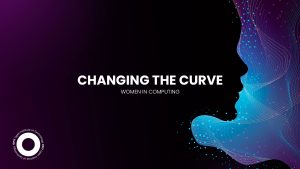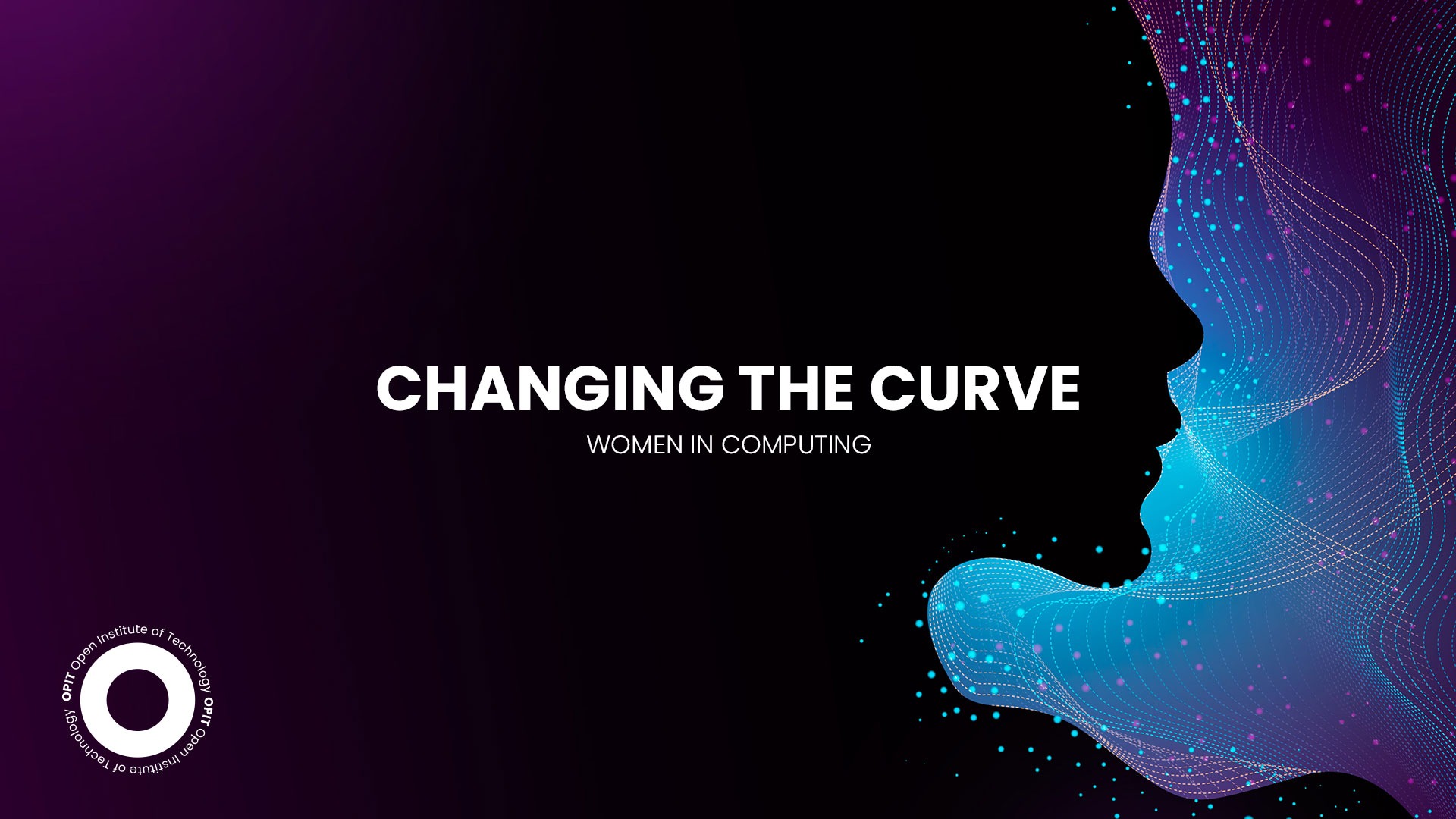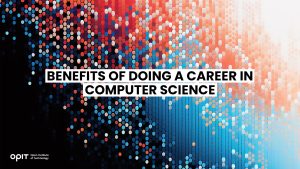

Did you know that the world’s first computer programmer was a woman? That’s right, Ada Lovelace, an English mathematician and writer, is widely considered the first person to recognize the potential of a computer. She realized it could go beyond mere calculations and handle symbols and logical operations (besides numbers).
Yet, many scholars still argue that Lovelace’s contributions to the field have been vastly overstated, going as far as denying them altogether. Unfortunately, it all boils down to a belief that a woman “didn’t do, and shouldn’t do, and couldn’t do” such a thing.
Perhaps similar beliefs are the reason why women continue to be underrepresented in the field of computing today. Since Lovelace, many female tech visionaries have made significant and varied contributions to this field. And yet, the gap persists.
Is this how it will always be? Or can something be done to pave the way for a more inclusive future in computing? That’s what this article will explore.
The History of Women in Computing and Computer Science
Ada Lovelace’s work in the mid-19th century laid the foundation for modern computing, earning her the flattering title of “World’s First Computer Programmer.” But she wasn’t the only woman to make monumental contributions to computer science.
To understand the ever-growing push for equality in computing, you must first take a journey throughout history, highlighting some of these women’s most notable (and often overlooked) contributions in this field.
1952: Grace Hopper
Grace Hopper, a U.S. Navy admiral and computer scientist, invented the first computer compiler, translating English instructions into the target computer’s language. Code optimization, formula translation, and subroutines are just some computing developments inspired by Hopper’s groundbreaking work.
That’s why it shouldn’t be surprising that the world’s largest gathering of women technologists is named in her honor – the Grace Hopper Celebration.
1962: Katherine Johnson
Katherine Johnson, one of the women immortalized in the 2016 book and film “Hidden Figures,” was the one to run equations needed for John Glenn’s historic orbital flight in 1962. She would go on to work on other groundbreaking NASA missions, including the Apollo program.
1970s: Adele Goldberg
Though Adele Goldberg has made many contributions to computing, she’s best known for developing the Smalltalk programming language, which was crucial in shaping modern graphical user interfaces.
1985: Radia Perlman
The fact that Radia Perlman is often referred to as the “Mother of the Internet” probably tells you all you need to know about her importance in computing history. Perlman is renowned for inventing the Spanning Tree Protocol, a technology that greatly enhanced the reliability and efficiency of network communication.
1997: Anita Borg
In 1997, a U.S. computer scientist, Anita Borg, founded the Institute for Women in Technology. This institute had (and continues to have) two simple goals – to increase the representation of women in technical fields and enable them to create more technology.
2018: Joy Buolamwini
Joy Buolamwini, currently one of the most influential women in computer science, is primarily known for her groundbreaking graduate thesis uncovering significant racial and gender bias in AI services. She also founded the Algorithmic Justice League, a non-profit organization focusing on making tech more equitable and accountable.
The Present State of Women in Computing and Computer Science
There have undoubtedly been strides in increasing women’s representation in computing and computer sciences. Though it’s challenging to determine what came first, one of the most significant moves in this regard was giving credit where credit’s due.
For instance, the “ENIAC Six,” the six women tasked with programming the ENIAC (Electronic Numerical Integrator and Computer), weren’t initially recognized for their historic contributions. It took decades for this recognition to come, but this doesn’t make it any less monumental.
But even with these recognitions, initiatives, awareness campaigns, and annual events, the gender gap in computing persists. This gap can be seen by examining the number of women in three crucial computing and computer science stages – education, workforce, and leadership.
Today, there’s no shortage of degree programs in computer science, both traditional and online. But one look at the data about the students attending these programs, and you’ll understand the issue. Though more women hold tertiary degrees in the EU, they’re notably absent in computer science-related fields.
The situation in the computing workforce is no better. Currently, women occupy only 22% of all tech roles across European companies, and to make matters worse, this figure is on a downward trajectory.
Just when you think it can’t get any more dismal, take a look at the highest levels of professional leadership in computing and technology. One look at the C-suite (senior executives) stats reveals abysmal figures. For instance, only 9% of the U.K. C-suite leaders are women.
The Reasons Behind the Current State of Women in Computing
By now, you probably agree that something needs to change to address the gender disparity in computing. And it needs to change drastically. But to propose effective solutions, you must first examine the root of the problem.
Though it’s challenging to pinpoint a single explanation for the underrepresentation of women in computing, let’s break down factors that might’ve contributed to the current situation.
The Lack of Women Peers and Mentors
Paradoxically, women might be less willing to enter the computing field due to the lack of visible representation and mentorship. Essentially, this creates a never-ending cycle of underrepresentation, thus only deepening the gender gap.
Societal Stereotypes and Biases
Deep-rooted stereotypes about gender roles can, unfortunately, dissuade women from pursuing computer science. The same goes for stereotyping what average computer scientists look like and how they act (the “nerd” stereotype often reinforced by media).
Fortunately, initiatives promoting diversity and inclusion in computer science are breaking down these stereotypes gradually yet efficiently. The more women join this field, the more preconceived (and misguided) notions are shattered, demonstrating that excellence in computing knows no gender.
Hostile or Unwelcoming Work Environments
It’s well-documented that highly collaborative fields were less welcoming to gender minorities throughout history, and computer science was no different. Though the situation is much better today, some women might still fear working within a predominantly male team due to these lingering concerns from the past.
Educational Disparities
Numerous studies have shown that precollege girls are less likely to be exposed to various aspects of computing, from learning about hardware and software to dissecting a computer. So, it’s no wonder they might be less inclined to pursue a career in computing after lacking exposure to its foundational aspects.
A Worse Work-Life Balance
Many big tech companies are notorious for long working hours. The same goes for computer science as a field. The result? Some women might perceive this field as too demanding and impossible to reconcile with raising a family, leading them not to consider it.
How to Change the Curve
Though the past might’ve seemed bleak for women in computing, the present (and future) hold promise for positive change. Of course, no fundamental changes can happen without collective commitment and decisive action. So, what can be done to change the curve once and for all and promote greater gender diversity in computing?
Striving to Remove the Barriers
So, you believe women should experience all the opportunities that come with a career in computing. But this can only be done by actively addressing and eliminating the barriers impeding their progress in the field.
This means launching campaigns to dismantle the deep-rooted stereotypes, introducing policies to create supportive working (and learning) environments, and regularly recognizing and celebrating women’s achievements in computing.
Making the Field Exciting for Women
Educational institutions and companies also must pull their weight in making the computing field more appealing to women despite the existing challenges. This might involve hands-on and collaborative learning, showcasing diverse role models in the field (e.g., at the annual Grace Hopper Celebration of Women in Computing), and establishing mentorship programs.
Relying on Mutual Support
As long as women have a strong enough support system, they can conquer anything, including the often daunting field of computer science. Here are some organizations that can provide just that: (See if you can spot some familiar individuals in their names!)
Other than that, women now have access to a whole host of resources and opportunities they can use to advance their knowledge and excel in the field. These include the following:
- Coding bootcamps
- Career fairs for women in tech
- STEM scholarships
Gaining Access to Education
Allowing equal access to education to women might be the most crucial element in changing the curve. After all, proper education serves as a direct gateway to opportunities and empowerment in computer science (and beyond).
With the popularization of online studying, many of the obstacles (both actual and perceived) that traditionally hindered women’s involvement in computing have disappeared. Now, women can learn about (and engage in) computer science from the comfort of their own homes, going at their own pace.
That’s precisely a part of the reason Alona, a Latvian student at the Open Institute of Technology, chose to pursue online education in computer science. Even with two children and a job (and a Bachelor’s degree in linguistics), she can find time to study and potentially earn her degree in as little as two years. Talk about an outstanding work-life balance!
When pursuing a degree in computer science at the OPIT, there are no hostilities, inadequacies, or barriers, only boundless opportunities.
Related posts

Life is unpredictable. While many of us have specific hopes and expectations of how our futures will turn out, things don’t always go as expected. There are many variables and unexpected incidents that can interfere and force you to alter your plans, and this is particularly true when it comes to education.
For instance, you might have had plans to study a specific subject, but had to deviate from those plans due to unforeseen circumstances. Or you may have had to enter the workforce in an occupation different from the one you sought in an effort to earn an income, a move that may not provide you with the time or opportunity to achieve your desired educational aims.
In short, every individual’s career pathway is different, and very few go exactly as we expect from the outset. Fortunately, even if you experience a few false starts or sudden twists in your pathway, there are always options available to help you get back on track.
The Unpredictable Nature of Education
In theory, the educational process seems simple. You select a course of study that interests you from the vast array of subjects and prospective professions, select the appropriate classes, acquire the knowledge and skills you need to succeed, and then embark on your profession.
In reality, however, as many people know from firsthand experience, the road to education is often far from straightforward. Here are just some of the many challenges that can take your educational path in a completely different direction:
- Life’s Curveballs: As touched on in the introduction, life is impossible to predict. Financial hardships, health issues, and family emergencies are just some of the unfortunate occurrences that might derail even the most perfectly planned educational regime.
- Changing Interests: People’s desires and preferences don’t necessarily stay the same throughout their entire lives. As you grow, learn, and have new experiences, your interests may change, and so, too, may your educational objectives.
- Pressure and Burnout: Some academic paths are particularly challenging, demanding intense levels of study and hard work. This can sometimes prove too much to bear, even for the most resilient students.
- Failures and Setbacks: Conventional education largely builds around tests and examinations, requiring students to demonstrate their competencies repeatedly. It’s a system that doesn’t suit everyone, and test failures can lead to setbacks and delays.
- Inequality: People can be born with very different privileges and levels of access to education. Those in certain parts of the world may find it much more challenging to complete their education path for financial, cultural, or even political reasons.
- Late Bloomers: People develop at different paces. Some may struggle educationally early on in their lives, forcing them to make certain concessions or sacrifices related to their studies, only to find their feet later in life once they’ve entered the world of work.
Whether you’re a late bloomer, have had your educational aspirations delayed by personal problems, desire to learn new skills and try something different, or want to begin a fresh chapter in your professional life, the Open Institute of Technology (OPIT) may be able to help.
Introducing OPIT
OPIT is an online teaching platform, making high-level technological educational programs accessible to all, no matter their age or background. Offering education in fields like computer science, artificial intelligence, and digital business, OPIT provides a curated collection of degrees. In addition, they offer classes taught by world-leading tutors imparting the wisdom and skills students need to achieve their goals and become the tech leaders of tomorrow.
Meanwhile, for those who have had somewhat tumultuous or unpredictable educational paths, OPIT offers the perfect course corrector: the OPIT Foundation Year.
The OPIT Foundation Year
OPIT’s Foundation Year is a Pre-Tertiary Certificate in Information Technology, fully aligned with MQF/EQF Level 4 standards and valued at 60 ECTS credits. Lasting just one year, this program essentially serves as a comprehensive yet accessible springboard towards higher-level education, creating a path towards degrees and careers in dynamic, flexible fields, like computer science and digital business.
Like other OPIT programs, the Foundation Year is delivered entirely online via the OPIT Virtual Learning Environment. Combining live lectures, asynchronous content, and interactive assessments, students enjoy diverse and dynamic study experiences, acquiring core skills like academic writing, mathematics, and computer literacy, and building a bedrock of knowledge and confidence before taking their next steps.
Who Is the Foundation Program For?
The Foundation Program is designed to provide a solid base upon which to build the technological education many students need. It’s the perfect choice for those who are eager and ambitious to enter professions in AI, data science, and computing, but don’t feel that they have the necessary core skills and knowledge needed to dive straight into a degree.
Entry requirements are relatively relaxed in order to allow as many students as possible to enjoy the benefits of this program. With that said, applicants should ideally hold an MQF/EQF Level 3 or equivalent qualification, with the intention of pursuing a bachelor’s degree. A minimum of B2 level of English proficiency is also required, as this is the working and studying language of the institution.
What the Foundation Year Provides
Perhaps you’ve recently graduated, are considering a career change, or finally have the opportunity to return to education after initial delays or unexpected disruptions to your original plans. Either way, the Foundation Year can help you enjoy:
- Greater Self-Confidence: Foundation Year graduates gain the fundamental skills they need to enter degree programs with much more self-belief and assuredness.
- Superior Tech Knowledge: Lasting two terms, this course explores mathematics, academic reading and writing, and provides an introduction to computer hardware and software.
- Foundational Mathematics: Mathematics literacy forms a large part of the study focus for the Foundation Year, helping students feel more comfortable with numbers and formulas.
- Flexible Learning: Unlike more rigid, conventional education environments, OPIT gives you the freedom and flexibility to study at a pace that suits you best, all from the comfort of home.
- Global Community: OPIT is an international institution, with staff and students from all around the world eager to share knowledge, exchange ideas, and help one another.
Take Your Next Steps to Success With the OPIT Foundation Year
If you’re curious about a career in technology or have always wanted to work with AI, data, and computers, but struggled to find the time and opportunities you need to acquire relevant skills and knowledge, the Foundation Program was made for people like you.
It’s the ideal entry point into the exciting world of online education, and the perfect first step towards a prestigious degree from an innovative and increasingly successful institution. Download the brochure to learn more about it, or start your online application, today.

Students today have a broader range of fields of study to choose from than ever before, but with the world becoming increasingly technological and computers increasing in influence and importance, pursuing a career in computer science often proves a smart, strategic choice.
There are numerous benefits and career paths associated with studying and working in computer science, and we’ll be listing just a few of them in this guide.
High Average Salaries
With the rising cost of living in many parts of the world, it’s unsurprising that many students are thinking several decades ahead to determine what level of starting salaries they could obtain in different career fields.
Many are also seeking professions that offer the opportunity for growth and the ability to advance up the ranks over time, thus increasing their salary and their quality of life in the process.
If a strong, stable salary with the opportunity for improved income is one of your top career priorities, computer science should be at or near the top of your list of prospective careers.
According to recent data, computer scientists earn an average of over €65,000 per year, with certain jobs, like IT project leader and data scientist, paying ever higher. Starting salaries are strong, too, with graduates earning anywhere from €46,000 to €60,000, depending on their chosen profession and level of qualifications.
There are similarly high average salaries reported around the world in computer science and related fields such as data science and AI/ML engineering. These numbers are projected to increase in the years to come, pointing to computer science as a way for graduates to get off to the best financial start of any career.
Unrivaled Flexibility
A common problem with some subjects and courses is that they only provide graduates with a narrow set of skills and a similarly narrow range of potential professions to which they can apply those skills.
That’s not the case with computer science. Graduates in this field can enjoy instant access to a remarkably diverse array of career opportunities, with even newer opportunities being created all the time as technology evolves and innovations emerge.
A few of the many industries and roles you might choose to enter in the field of computer science include:
- Healthcare: As a software developer, data analyst, or cybersecurity expert
- Finance: As a fintech engineer, blockchain developer, or security analyst
- Media: As a graphics programmer, AI developer, or game developer
- Education: As an analyst, software developer, or machine learning engineer
Guaranteed Opportunities
Some career paths are more limited than others, with relatively low numbers of opportunities, recurring risks of job loss, or difficulty obtaining employment in the first place.
Again, with computer science, this simply isn’t the case. At a time when 75% of companies plan to embrace AI and other technologies by 2027, and businesses of all sizes and industries are now relying on computers more than ever before, computer science graduates can enjoy almost unbeatable job security.
Opportunities will continue to grow for people with good computing knowledge, whether that be in the obvious fields like software and web development, engineering, and AI development, or more niche sectors.
With so many options, you’re effectively guaranteed a long, rewarding career if you put in the necessary time and effort needed to establish a strong foundation of computing skills.
Rapidly Expanding and Evolving Industries
It’s no secret that the world of technology is a dynamic and fast-moving one. In the past 20 years alone, we’ve seen the proliferation of the internet, the rapid advancement of smartphones and wearable devices, the emergence of AI, and so much more.
In the years ahead, engineers and developers will continue to explore the boundaries of modern technology’s powers and potential, driving new innovations and improvements and opening more exciting job opportunities for those already established and experienced in this field.
Getting into computer science now could therefore provide a solid foundation for a career filled with excitement as you uncover and explore new ways of working with computers in fields as diverse as healthcare, finance, education, entertainment, manufacturing, logistics, and beyond.
Start Your Computer Science Career at OPIT
We’ve discussed some of the many benefits associated with careers in computer science, from the high starting salaries to the rapidly growing array of job options available to graduates. By now, you may be eager to follow this particular career path and take advantage of the wealth of opportunities.
If you’re wondering how to start, the Open Institute of Technology (OPIT) may hold the answers you need. As an exclusively online learning platform, specializing in computer science and digital business, and staffed by some of the world’s leading tech experts, OPIT is producing the tech leaders of tomorrow.
Some of the many advantages of learning with OPIT include:
- Accessible and flexible online education that matches your learning style and schedule
- Heavy focus on real-world applications of the skills you acquire
- An international community of like-minded students from around the globe
- A top team of tutors and lecturers from varying fields and industries
- Progressive assessment of skills and understanding – not constant exams
OPIT offers a small, curated selection of courses for those seeking to gain the technological skills and knowledge to succeed in their chosen areas of expertise. That includes a BSc (Hons) in Computer Science – a six-term program, worth 180 ECTS credits.
Numerous IT industry leaders and experts helped develop this fully accredited undergraduate degree, which is online and accessible to all. Like other OPIT courses, it offers a flexible learning program, with progressive assessments, fast-track options, and the opportunity to be part of a growing community of learners and tutors.
If the benefits of doing a career in computer science interest you, download the OPIT BSc in Computer Science brochure or fill out an online application today and take your first step toward a rewarding and fulfilling profession.
Have questions?
Visit our FAQ page or get in touch with us!
Write us at +39 335 576 0263
Get in touch at hello@opit.com
Talk to one of our Study Advisors
We are international
We can speak in:


